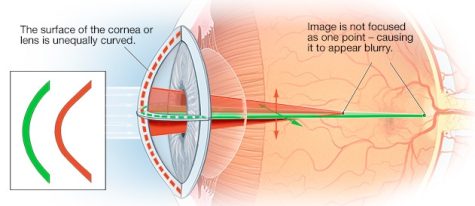Lasik: Overpriced or Worth It?
For those of you that have 20/20 vision, I resent you for being so perfect. Living life with glasses is a very different experience than being able to read what’s rather close to you, and that’s coming directly from someone who has had glasses for at least seven years now. Sometimes you can’t see the board, sometimes you can’t tell who someone is, sometimes you can’t even find your glasses in the morning, all because you have bad eyes. On average, a prescription pair of glasses costs $231, but some people pay $800 for one pair due to the glasses industry being a near-monopoly. There are many causes for poor eyesight, among which an extremely common one is astigmatism: a deformation in the curvature of your eye.

Astigmatism can be very unpredictable, and someone’s eye shape can change drastically between annual appointments. After some years, people start to look for a cure, if they don’t know of one already. They eventually come across a procedure called Lasik, where they use a laser to reshape the curve on your eye back into proper form. A lot of people either have the money for the procedure or they’re in a position where they can save up to have it done, but they might not be eligible for it in the first place. Depending on what laser they use, you’ll have to be 18 or 21 years old at minimum, but a lot of people can’t get surgery until they’re 25 or older since you need to have a stable prescription for a few years. When looking into Lasik, you might have to pay for appointments with eye specialists if you have a very severe case of astigmatism or another cause of bad eyesight, which could end up being useless since you might still be ineligible. If you are eligible, though, you still have to pay between $2,000-$4,000, on average, per eye. Most people’s question is, “Is it worth it for the price?” Nobody can give them a definitive answer to that, but personally, I think it is worth it.
We’ve already established an average cost of glasses at $231, so if you have to get a new pair every two years, starting at age ten, and ending at age 25, you’d pay $1,617 for all of those glasses, which is far less than the cost of Lasik, so some people might think it’s better to stick with glasses. The only issue is that glasses are very easy to break and it could happen every day, and you could need more than one pair of glasses every two years: there’s so many variables that you could be paying a significant amount more than getting Lasik. With Lasik, you pay about $6,000 on average for both eyes combined, which seems like a lot more, but you spend a little time recovering and then you can see 20/20 with no glasses in sight. Over time, Lasik pays itself off because you don’t struggle throughout daily life: you are safer on the roads, you don’t have to take a picture of something to be able to read it, and you stop paying for glasses, since the effects of Lasik usually last for the rest of your life. There are conditions which can make your eyesight blurry again, which needs another surgery to fix, but that mostly happens if you get your initial surgery when you’re towards your forties or fifties. Lasik’s prices also are rather stable with inflation included, so you don’t have to worry about getting a far higher price in the future and putting your eyes in a position to become malformed again. Most people don’t understand that their eyes are a blessing to be able to see out of, but the ones with glasses also forget the bliss of being able to see everything, and having that clarity makes me think it’s worth it. The investment may seem risky, but the failure rate of Lasik is about 0.3%, and that’s typically infections and dry eye, not blindness. So instead of paying for a fragile, marked-up device that doesn’t let you see perfectly, how about you give up your payments to the monopoly, get Lasik, and spend the rest of your life seeing the little things that you never saw before.
